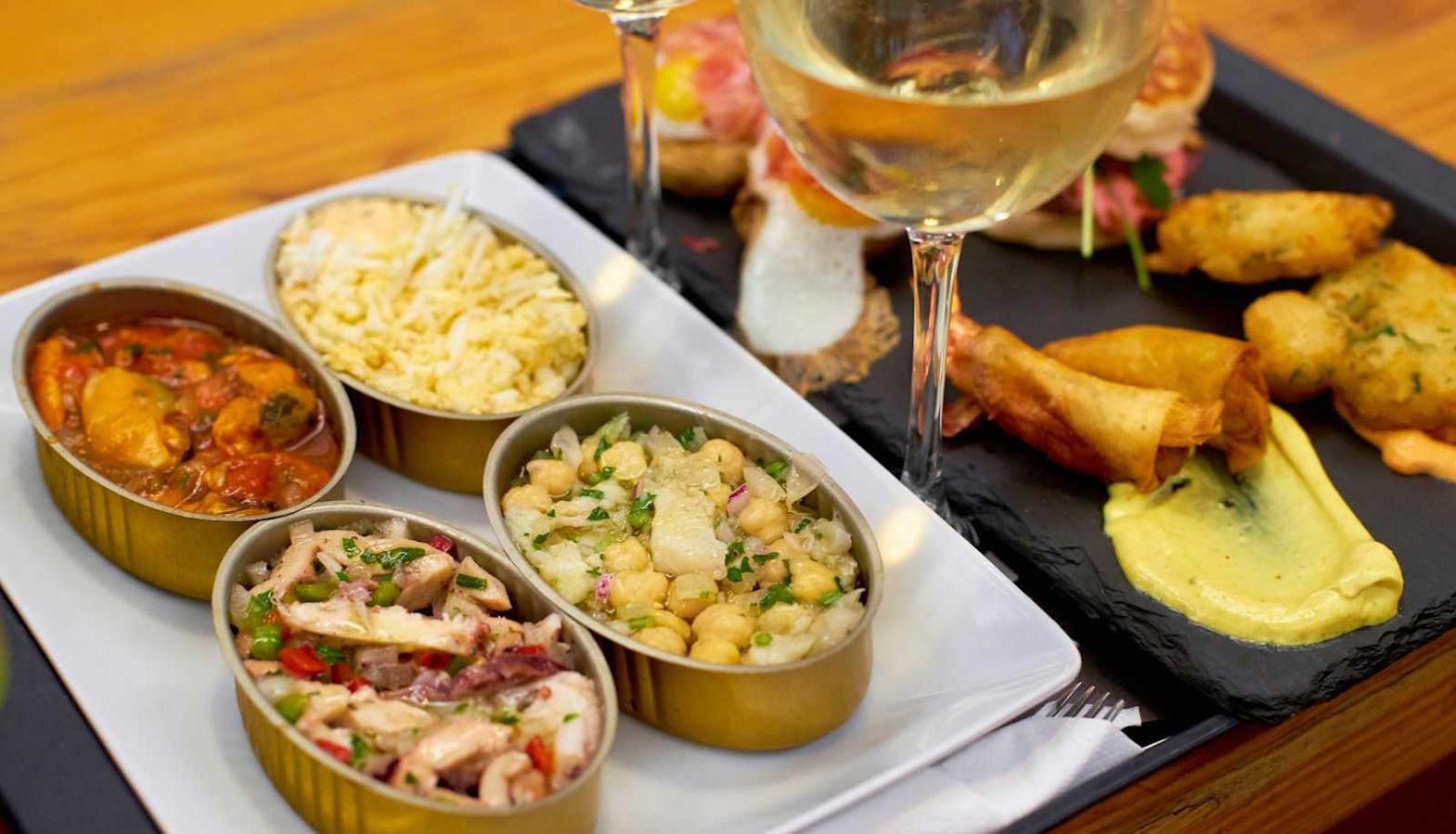Chat with Vinny
The Vinho Verde region in northern Portugal is best known for its crisp, wallet-friendly whites with a hint of spritz, perfect for summer sipping. The region also makes low-alcohol, zippy reds and rosés that pair beautifully with a wide array of dishes.
What is Vinho Verde wine?
Meaning ‘green wine’ in Portuguese, Vinho Verde (pronounced “veen-yo vard” and not “vee-no ver-day”, if you’re interested) is a wine region located in the northwest of Portugal. Named after the vibrant, green landscapes in the area, Vinho Verde wines are celebrated for their characteristic minerality – a result of the granite soils in which the grapes are grown.
Although famous for its vibrant spritzed whites that account for most of its production, this region is also home to red and rosé wines that deserve to be explored.

Where are Vinho Verde wines made?
Nestled in the lush green hills of northwest Portugal, the Vinho Verde region starts just below the Spanish border and extends as far as the Atlantic Ocean, where it meets the city of Porto, the home of Port wine.
With plenty of rain and two rivers running through it – the Douro and the Minho – Vinho Verde lives up to its name with a verdant green landscape.
Vinho Verde comprises nine subregions, each influenced to different levels by the cool, wet coastal weather and granite soils:
Monção e Melgaço
Lima
Cávado
Ave
Sousa
Paiva
Baião
Amarante
Basto
In the far north of the region, the Monção and Melgaço subregion borders Spain and is home to excellent quality Alvarinho (Albariño) wines. These wines are prized for their elegant minerality and flavours of citrus, melon, nectarine and saline.
The three subregions closest to the coast – Lima, Cávado and Ave – are best known for their zippy, easy-drinking whites made with native Arinto, Loureiro and Trajadura grapes.
The five subregions in the sunnier south of Vinho Verde – Sousa, Paiva, Baião, Amarante and Basto – grow the harder-to-ripen Azal and Avesso grapes, along with the red varieties Espadeiro, Vinhão and Padeiro. These varieties are most commonly used for local table wines.
Discover White Vinho Verde wines
Around 85% of all wines produced in Vinho Verde are white, with most a blend of six native grape varieties – Alvarinho, Arinto, Azal, Avesso, Loureiro and Trajadura.
Super fresh, fruity and usually low in alcohol (under 11.5% ABV), Vinho Verde is at its best in the year of its release. So don’t wait around to enjoy it.
Vinho Verde white wines vary in style depending on the grape blend and where they are grown, but most are dry in style, with flavours of lemon, white melon, peach and lime blossom.
Although all the native grapes have their charms, Alvarinho and Loureiro have emerged as a dynamic duo, producing the most exciting and complex styles of Vinho Verde wines. Known as Albariño in Spain, Alvarinho produces elegant whites with attractive tropical, peach and lemon aromas wrapped around a mineral core.
Loureiro has much in common with German Riesling, so expect mouth-puckering lime flavours, floral hints and a rich, oily texture. Alvarinho and Loureiro work well as single-variety wines and have impressive ageing potential for whites.
Putting on the spritz
Vinho Verde whites are famous for their slight tongue-tingling spritz, resulting from the tradition of speedy bottling, which saw a second fermentation inside the bottle.
Historically, and much like Beaujolais Nouveau, winemakers acted with speed to get the first bottles of the vintage onto local tables after harvest. In Vinho Verde this resulted in carbon dioxide building in the bottle. The accidental bubbles proved so popular that winemakers now actually add a small amount of carbon dioxide during bottling to give their whites that same subtle fizz.
Not all Vinho Verde wines are slightly sparkling. Look out for Burgundy-shaped bottles if you’re seeking a white without spritz.

Red and rosé Vinho Verde wines
Although white wines reign supreme in Vinho Verde, the region’s reds and rosés are worth exploring. Offering notes of plum, sour cherry and floral hints, the reds are usually made from the local grape Vinhão (commonly known as ‘Sousão’). Similar to Malbec, this grape is lighter and fresher, with a lower alcohol content and distinct peppery aromas.
Vinho Verde reds can also be made from Amaral, Azal Tinto, Borraçal, Brancelho, Espadeiro, Pedral and Padeiro grapes. These native varieties produce juicy, pale reds with vibrant acidity.
The rarest of them all is a rosé Vinho Verde. Usually made from Espadeiro, Padeiro, Vinhão, and Touriga Nacional grapes, this style of Vinho Verde is known for its enticing, darker pink shades (compared to the pale pink rosés you find in Provence).
Pairing food with Vinho Verde wines
Available in white, red and rosé styles, Vinho Verde is a versatile, food-friendly wine that pairs with a wide range of dishes. The naturally low alcohol content and slight fizz of the whites make them an ideal solo glass as an evening aperitif.
White Vinho Verde’s zippy acidity also makes it an ideal partner for all forms of seafood, from Portugal’s signature salt cod to sushi, crab, lobster and fried seafood such as calamari and fish and chips.
Vinho Verde rosés works well with roasted chicken and light pasta dishes, while the reds can match grilled meats and burgers – perfect for a summer barbecue. When it comes to serving temperature, the colder the better for the whites and rosés, which benefit from being fridge-cold. The reds can also take being slightly chilled in a similar way to a Beaujolais to ramp up their freshness.

About the author
Sarah Turner
Sarah is a wine writer and editor with over 25 years’ experience in the world of wine. She began her career in retail, passing the WSET Level 4 Diploma, before becoming a supermarket wine buyer and finally finding her home in our creative team. Her love of food, wine and travel has taken her all over the world, but she has a soft spot for Portugal’s Douro Valley and the sherries and tapas bars of Andalucia.

